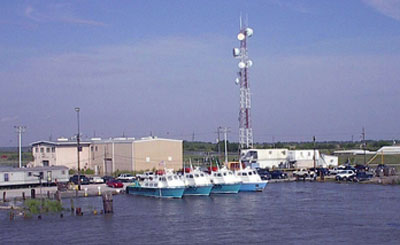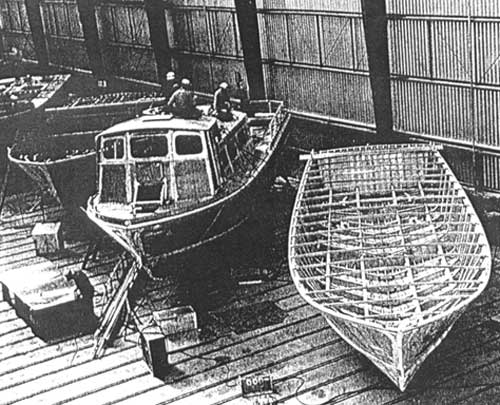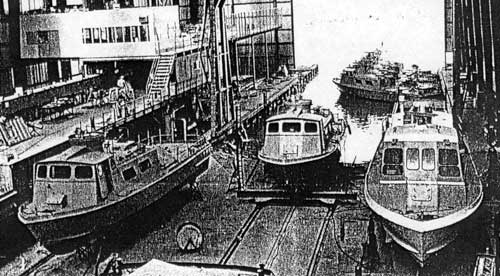On 1 February 1965, Naval Advisory Group, Military Assistance Command Vietnam (NAVADGRP
MACV), published a staff study entitled "Naval Craft Requirements in a Counter
Insurgency Environment."
In the opening promulgation, Captain W. H. Hardcastle, Jr., noted, "COIN water borne
operations are difficult, demanding, and unique. A prevalent belief has been that COIN
craft can readily be obtained from existing commercial and naval sources when needed.
Unfortunately, no concerted effort has been made to develop COIN craft specifically suited
to perform the many missions needed to combat insurgent activities."
This study concluded that there was a need for a small, shallow draft patrol craft design
to address the types of interdiction operations just starting to being conducted in the emerging
naval conflict in South East Asia. Since the US Navy had never considered such a requirement before,
the study made a very strong recommendation that action be taken to fill this void in the capabilities
required to prosecute the war in Vietnam.
The requirements for a small COIN (Counter Insurgency) patrol craft were listed as:
|
1. Reliable and sturdy.
2. Non-wooden hull, with screw and rudder protection against groundings.
3. Self-sufficient for a 400-500 mile patrol range.
4. Speed of 20/25 knots.
5. Small high-resolution radar (Range up to 4-6 miles.)
6. Communications equipment compatible with Army/Air Force equipment.
7. Quiet operation.
8. Armament for limited offense.
9. Sparse berthing, no messing.
10. Fathometer, accurate from 0-50 feet.
11. Small, powerful searchlight.
|
The emphasis for such craft was further heightened with the discovery and capture, in early March 1965, of a 130 foot
North Vietnamese vessel in Vung Ro Bay (South Vietnam) containing an extensive cargo of arms, ammunition, and
explosives. Documents also found on the vessel gave clear indication that the contents were intended for North
Vietnamese units which had inflitrated into the south. This sent a clear signal that water borne transport was
a key element of the enemy's strategy and that something would have to be done to meet this threat.
As a result, Task Force 115 (Operation Market Time) was initiated to address these
infiltration activities. And the need for for a vessel to opertate close to the shoreline and inside the
rivers to deter such activities became urgent. As a stop gap measure, the US Coast Guard was asked to
utilize their expertise and existing inventory of coastal patrol craft to provide appropriate vessels to
quickly fill this need. The Coast Guard did have 82-foot patrol vessels that were rapidly modified and
sent to Vietnam. But their speed and draft limitations made them less than compliant with the criteria
of the February study and the needs of this new aspect of the conflict. The Navy was given the assignment
of coming up with a better solution to meet the criteria of the study.
By early June 1965, the Navy had conceded that they did not have available any suitable vessels meeting these criteria.
So the word went out that a boat of about 50 feet in length was urgently needed.
|
One that was fast, and could carry suitable weapons. The task of quickly finding and delivering such a craft was given to Navy
Commander Cab Davis. Fortuitiously, there was a civilian GS-14 on his staff, Mr. A.G. "Gren" Eldredge, that had worked on the
February NAVADGRP MACV report and was also part of an earlier Advanced Research Project Agency (ARPA) study to determine availabiity
of craft meeting such criteria. Their investigation had turned up a boat builder on the Gulf of Mexico with a vessel that might be
quickly modified to meet what the Navy was looking for.
| |
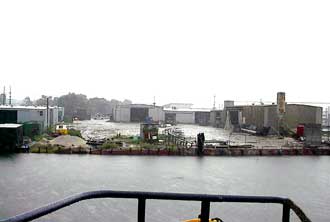 |
|
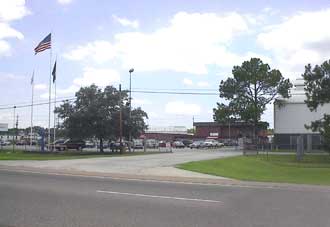 |
|
This firm's primary business was the manufacture of water taxis that were used to service the
offshore oil rigs. A few days after hearing of Gren's recommendation, Cab and his boss, Rear
Admiral Sunishine (BuShips), accompanied by a lawyer and a contract specialist, went to Louisiana to
visit Sewart Seacraft. On the spot the Navy bought the rights to the drawings for their "swift boat.
" The firm was also asked to provide modified design prints adding guns,ammunition storage and a
galley. |
The design prints were ready within a week, and the Navy used them to advertise for bids from other boat builders, in addition to
Sewart Seacraft. Although other boat builders did bid on the project, Sewart Seacraft was selected only two weeks later. The whole
process had taken a little more than a month. This was mid July 1965.
Therefore the US Navy's "Swift Boat" design was adapted and adopted from Sewart Seacraft's
all-metal crew boat, which had previously seen service supporting the oil drilling industry in the Gulf
of Mexico. | |
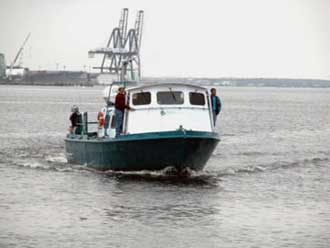
|
The Navy Bureau of Ships subsequently made more than fifty military modifications to the
commercial design. These changes included two (2) .50-caliber machine guns, in a Mark 17
turret above the pilot house, an over and under .50-caliber machine gun/81 mm mortar
combination mounted on the rear deck, the construction of a mortar ammunition storage box on the
stern, the installation of habitability equipment such as crew rest bunks, a refrigerator /
freezer combination, a sink within the boat, and other minor equipment additions and modifications
to make the Swift Boat compatible with the requirements of the operations expected in South East Asia.
|
In spite of all these changes, the first four (4) boats were delivered to the U.S. Navy in a mere
forty (40) days. The first two Swift Boats, numbers 1 and 2, designated by the Navy as "Patrol Craft Fast"
(PCF), arrived via railroad shipment at the Amphibious Base in Coronado California for final shakedown testing in
late August 1965. These craft were assigned permanently to NAB Coronado as training boats for the new Swift crews
and maintenance personnel who had begun to arrive in San Diego by mid-September. | |
 |
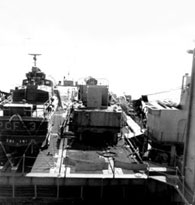 |
|
Meanwhile PCF numbers 3 and 4 were sent directly by Miltary Sea Transport Service (MSTS) carriers from New Orleans
to Subic Bay in the Philippines, arriving on 15 September 1965. These two, plus additional boats that followed,
were met by advance personnel from the newly formed Boat Squadron One, who immediately began outfitting and organizing the
boats for further deployment. By the end of 1965, the first increment of boats were loaded into the well decks
of Landing Ship Docks (LSDs) for transport to the initial bases at Da Nang and An Thoi which were being set up for
operations |
As additional Swift Boats came off the production line in Louisiana, they were also sent via MSTS and LSD ships to
the other bases being established at Cam Ranh Bay, Vung Tau and Qui Nhon. This process of delivery continued well into 1966
The original order for fifty-four (54) boats was followed very shortly thereafter by an additional order for fifty (50)
more of the "Swift Boat Mark I" design. All were built by Sewart Seacraft Inc. in Berwick, Louisiana and delivered
during the 1965-67 time frame. |
|
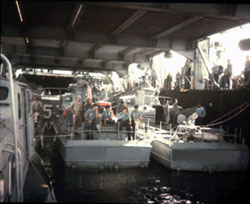 |
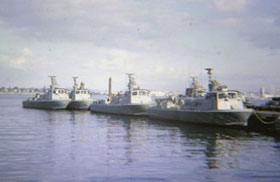 |
|
An additional five vessels from the total procurement of one-hundred and four Mark I Swift Boats were added to those used
for training: PCF numbers 7, 8, 29, 30 and 104. Later, when they became available, two of the newer Mark III Swift Boats,
numbers 813 and 816, were also added to the training boat fleet. All nine PCFs were relocated to Mare Island along with the training facility in 1969. PCF 8 was lost in a training accident due to rough weather.
|
When the need for training ceased in 1971, the Swifts at Mare Island were dispersed to other locations.
PCF numbers 1 and 2 went to US Navy facitilities in Panama. They were discovered in disrepair in 1994 and restored to
their original configurations in 1995. PCF 1 is currently located in front of the
Navy Yard in
Washinton DC. PCF 2 was donated to the
Tidewater Community College
and continues active service as a civilian research vessel. |
|
 |
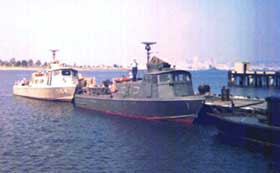 | |
A third Mark I Swift was discovered in 1997 in a salvage yard at the submarine base in Bangor Washington. This turned out to be
the training boat PCF-104, shown here behind PCF-1 at the pier at Coronado in late 1967. This Swift was moved back to Coronado by the
Swift Boat Sailors Assn where they spent many hours carefully
restoring the craft to pristine
condition. PCF-104 is now a treasured part of the
Vietnam Unit Memorial |
The two Mark III training Swifts were transferred to the
Armed Forces of Malta
as part of the Military Assistance Program and remain on active duty thirty five years later. No information is currently
known about the disposition of the remaining three training boats. And very little information is known about the other US
Navy Swift Boats procured during the late 1960's. See the
Post Script
for a rare image of former USN/VNN Swifts |
|
 |
|
